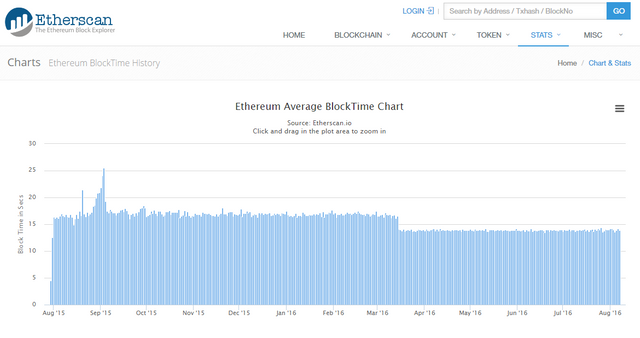UNDERSTANDING ETHEREUM : Part 2
If you haven't read part 1,
Please Click Here

The Ethereum Blockchain
Both ethereum and bitcoin operate global transaction ledgers that today achieve remote and distributed validation through the use of a Proof-of-Work (PoW) protocol, a design in which participants expend significant energy to identify unique pieces of data that can then be easily verified by the wider network.
Blocks in both bitcoin and ethereum are today similar, containing information such as the block number (denoting how many blocks have passed since the initial block) and the difficulty (a metric that denotes how challenging it is to complete the work needed to create a block).
On the bitcoin network, the transaction script is “stateless”, meaning there is no state prior to execution of the script, and an update to this state is not saved after its execution. Contracts on ethereum are considered “stateful”, meaning that they are aware about past information stored on the network and, if instructed via smart contract, can be programmed to take actions in the future. When peers, or members of the ethereum network, receive a block of data, they then run all transactions to verify a mathematical figure representing the system state at that time. If the nodes can validate this data, they accept the block for inclusion on the blockchain.
Block Size
On the bitcoin blockchain, blocks are limited in size to 1 MB. This not only creates a cap on the amount of transactions that can be processed per second (currently it’s seven), but it also has turned into a major point of contention within the bitcoin community as it seeks to increase this limitation.
Ethereum has no such limit on the size of its blocks. Because ethereum executes scripts and contracts, this is a necessity, as limiting the size of a block would not only stunt the concept of Turing-completeness, but limit the amount of storage a contract could use to execute.
Blockchain Size
As of May 2016, the size of the ethereum blockchain has grown to approximately 17 GB.
While this is still dwarfed by the bitcoin network’s blockchain size, which stood at a little under 69 GB at that time, it’s worth pointing out that the bitcoin network is over eight years old, while at 17 GB, ethereum has been operating for just nine months.
At an average growth rate of around 1 GB per month, ethereum’s blockchain is growing more slowly than bitcoin’s, which is expanding in size at approximately 3 GB per month.
Block Times
Bitcoin’s blockchain adds new blocks roughly every 10 minutes, which means that a transaction is generally not confirmed on the ledger until this time. In practice, actual confirmations may take longer, as those who use the protocol generally wait for six confirmations, or six blocks, before considering a transaction settled.
Bitcoin and ethereum are not the only blockchains, or ledger structures, that use consensus methods. Various protocols have various block times. The Ripple protocol, developed by San Francisco startup Ripple, is designed to update its state every three to six seconds. Ethereum has set its target on 12-second block times, though current block times are closer to 14 seconds.

Good afternoon. Your article is very useful. I voted for you.
Thank you